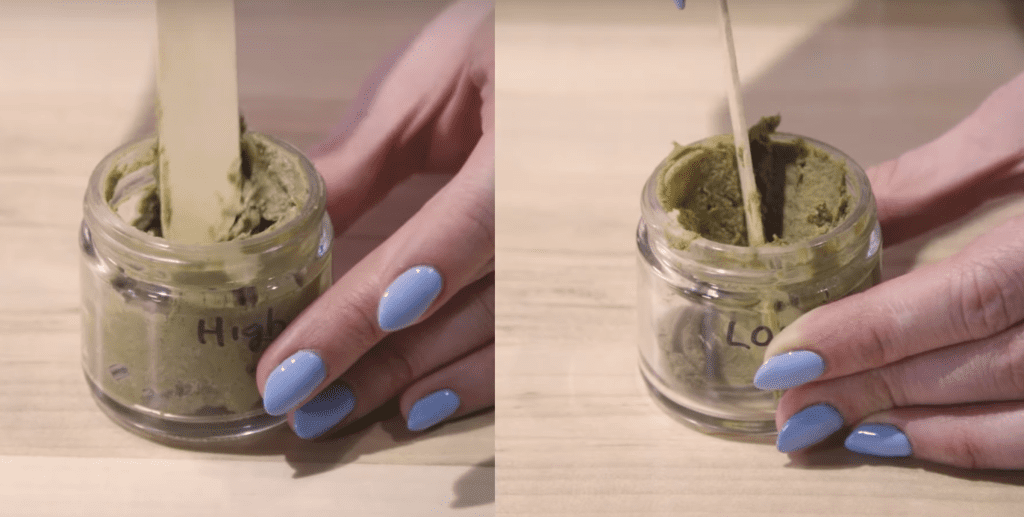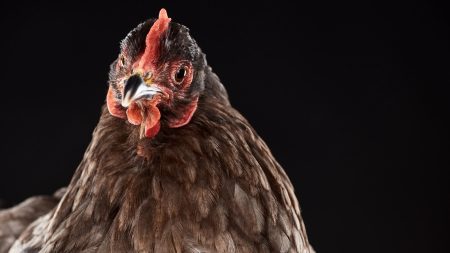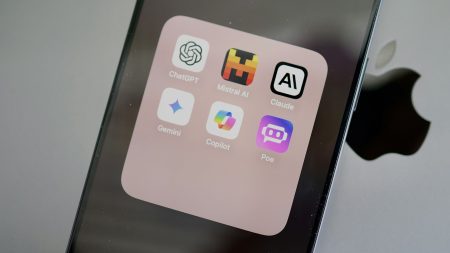I’ve always been a big fan of poop, and not just because I get plenty of fiber. As a science journalist, I’ve long felt that stories about stools are some of the most fascinating to tell. Everybody poops, after all, and too many of us go through life without stopping to think of all the wild and crazy research going on to better understand the stuff. So when Procter & Gamble offered PopSci an exclusive look at Charmin’s Cincinnati-based toilet-paper-testing facilities—including unprecedented access to their proprietary fake poop—I couldn’t say no. This was a poop scoop I just couldn’t pass up. Here are seven things we learned about your favorite flushables along the way.
There are robots devoted to wiping your butt
Okay, not literally. But P&G does have an analytical lab full of super-calibrated instruments for testing paper properties, and an increasing number of them are autonomous robots. I watched one bot spend several minutes retrieving tiny strips of paper and placing them in a device designed to slowly pull them apart, recording the force required to cause a tear. Other machines in the lab measure things like what angle a paper will drape at as it hangs off a roll, how much pressure a finger-sized probe will need to break a sheet while it’s wet versus when it’s dry, and exactly how thick the quilting on a slim piece of TP really is, down to fractions of a millimeter.
It’s a tug of war between softness and strength
Relatable, I know. But just stop for a second and think about the job you ask each sheet of toilet paper to do. It has to hold up really well until it’s been wet for more than a few seconds, and then it’s gotta make itself scarce. Meanwhile, you probably want it to feel reasonably soft on your butt. As the engineers at P&G explained during my visit, you can’t make absorbent paper softer without also making it weaker.
Bath tissue is a product that seems pretty simple to the consumer, and even most picky shoppers don’t do more than squeeze a package or look for eco-friendly messaging on the label. But it takes all of the analytical lab work described above to make a roll that fits the necessary criteria: toilet paper has to feel pretty good on your skin, not rip when you’re using it, and stay together and keep your hands safe from poop even once it gets a little wet. But it also has to break apart relatively quickly once it’s flushed, because no one wants a clogged toilet (or a fatberg). You can’t assume the most expensive product on the shelf is the most luxurious, because it’s still going represent a careful balance of those properties—and it might not skew in favor of the ones you find most important.
Fluffy white paper comes from trees, not recycled paper
It’s also pretty difficult to make soft and strong toilet paper using recycled fibers, which are shorter than virgin paper fibers (that’s why most products marketed as “soft,” including Charmin’s, get D or F ratings on sustainability from the Natural Resources Defense Council). So, while toilet paper’s job might seem easy from your perspective, it actually takes a lot of testing to find the right balance of strong, soft, and sustainable. The truth is that no company has really nailed that triple-threat combo yet, so the work of the TP-testing robots I met in Ohio is far from finished.
As a consumer, I think there’s a pretty important takeaway here: if sustainability is important to you, you’re going to have to do some research before buying your next batch of bath tissue. Where does the paper come from? How much wood goes into a roll? How much water?
You should figure out how soft is soft enough for you and shop accordingly, and you should also pay attention to how much paper you’re using—because if you’re using whole handfuls of rough and thin sheets, you might be better off buying a squishy roll you can train yourself to use more sparingly. Nobody is asking you to wipe your butt with sandpaper (which would be super bad for your sewer system, anyway) but there are options between single-ply and paper so cushy you could use it as a mattress. If you’re putting as much thought into the way you use TP as most people do (which is to say pretty much no thought at all) there are probably easy ways you could tweak your shopping choices and bathroom habits to cut down on the resources you send into the sewer.
People train for six months to evaluate the stuff you flush down your toilet
No, I’m not talking about the scientists and engineers who actually make the stuff you flush down your toilet (most of whom have several advanced degrees). Products like toilet paper have to satisfy consumers in ways you can’t measure with a super-calibrated robotic probe. Your impression of a roll is also influenced by more subjective qualities like softness, smell, plushness, and color.
At P&G, that data comes from a fleet of sensory testers who train for six months to evaluate samples with every sense but taste (which we really hope isn’t something you look for in your toilet paper). The testers, who are mostly students, retirees, and stay-at-home parents looking for interesting part-time work, are kind of a big deal: just around half of them actually qualify to stay on after going through that half-year of testing. Imagine watching six months of your life go down the crapper because you couldn’t learn to rate toilet paper roughness with enough precision.
Those delightfully weird product demos could be weirder
P&G’s Gregg Weaver has a very important—and very silly—job. As the Senior Scientist in Family Care Research & Development, he gets to oversee the invention of product demos for marketing and sales purposes. What’s a toilet paper demo look like? You’ve seen a bunch: just think of any paper product commercial with a side-by-side comparison. Stacking marbles on a stretched-out piece of tissue until it breaks, for example, might seem simple—but someone has to figure out exactly how many marbles a sheet of Charmin can handle, and whether that stack of balls looks impressive sitting next to the pile a competitor’s product can support. There’s a fine line between perfectly designing a little experiment so it provides the intended visual, and making it seem like your product can accomplish things it can’t. Some tests of strength just don’t translate as such to a person watching them on TV, and some of the coolest potential tricks might actually make your paper look bad.
But even when a test is technically effective, it’s not always destined for primetime. Weaver showed me a video clip of his favorite demo, which has only been used internally. He calls it “the balloon butt,” and it is a feat of engineering and a work of high art: with the camera focused on a slightly-deflated balloon smeared with goo, a hand emerges to tug down on the tied-off end. It creates a deep crease—a balloon butt—which the hand proceeds to wipe with toilet paper. Once released, the balloon springs back into shape and reveals whether the tissue managed to give it a deep clean. It’s the closest you can come to showing a butt being wiped on television—or too close, actually, since P&G wouldn’t even hand over the clip for use in this article. I can only imagine the demos they didn’t let me see.
Yes, there’s secret poop in the lab
While commercials may rely on tricks like blue liquids (a color chosen precisely because it doesn’t look like anything your body should be putting in the toilet) and cartoon bears (which, by nature of not being human, can acknowledge that they poop without offending our delicate sensibilities), people designing toilet paper need to know how it performs under fecal pressure. Luckily, NASA has a fake poop called FeClone designed to test astronaut facilities that stands in for real turds as TP flies through the clear pipes of the P&G flush lab, which is exactly what it sounds like—a trio of toilets topped with clocks so researchers can monitor a sheet’s behavior when it hits the bowl, and an in-house sewage system set-up to show off what happens after. The lab keeps a freezer full of FeClone on hand for creating realistic bundles of used tissue. That way, they can follow the journey of the sheets they’re testing from cradle (AKA roll) to grave (AKA pile of poop in your septic tank).
But what if you need your fake feces to do more than just flush like the real thing? What if you also need it to smear like the real thing?
P&G started using FeClone in 1994 (until then the company used mixtures made from dog food), and for a while, it was an all-purpose ersatz effluence. But it didn’t interact with skin the way real poop does—it feels more like sticky clay, as you can see in the video above. So, in 2010, the company started working on an “artificial BM” that has the same surface energy, fluid dynamics, and adhesion to human skin as the real stuff. The result is made of food-grade ingredients and even comes in a trio of textures, from diarrhea to constipation. It’s got everything but the smell. I got to play with some of it, and I can say it’s realistic enough that doing a wipe test (which involves squirting a little turd into a “butt” created by squishing the crook of your knee or elbow shut) in front of strangers felt very gross.
There’s humiliation packed into every single roll
Speaking of gross things in front of strangers, I also got to experience a facsimile of P&G’s 1-on-1 qualitative interviews, where researchers probe potential consumers about their bathroom habits and observe them using the product (in their elbow butts, of course). They do this to take notes on wiping behavior and effectiveness. I was asked to demonstrate how I usually grasp “my implement” (read: wad of toilet paper) and to show my interviewer how I pull it from the roll. There was also a pretty in-depth survey of my general bowel movement routine. Companies like P&G use these interviews to get as much data as possible about the acts of shopping, rolling, wiping, and flushing in the hopes of creating a product that does what consumers want it to do. After all, they can’t exactly follow thousands of people into the bathroom. Extremely awkward chats are the next best thing.
These questions are usually asked in private, where subjects are, presumably, less likely to get so flustered that they totally forget how they wipe their butts—and also where they’re not being filmed by their peers. You can check out a few highlights from my poop quiz in the video at the top of this post. At least I managed to get my elbow butt clean.









